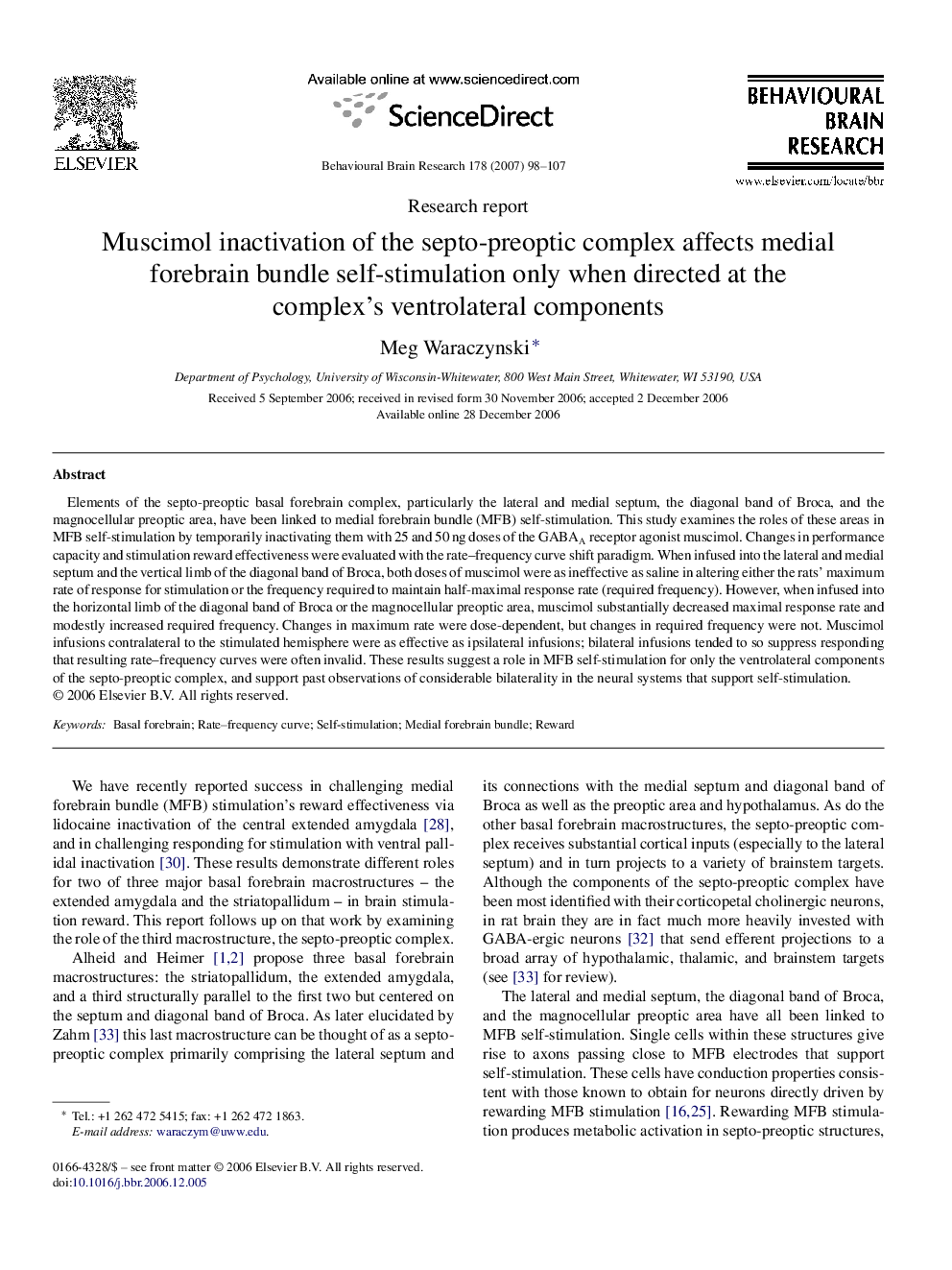| Article ID | Journal | Published Year | Pages | File Type |
|---|---|---|---|---|
| 4315875 | Behavioural Brain Research | 2007 | 10 Pages |
Abstract
Elements of the septo-preoptic basal forebrain complex, particularly the lateral and medial septum, the diagonal band of Broca, and the magnocellular preoptic area, have been linked to medial forebrain bundle (MFB) self-stimulation. This study examines the roles of these areas in MFB self-stimulation by temporarily inactivating them with 25 and 50Â ng doses of the GABAA receptor agonist muscimol. Changes in performance capacity and stimulation reward effectiveness were evaluated with the rate-frequency curve shift paradigm. When infused into the lateral and medial septum and the vertical limb of the diagonal band of Broca, both doses of muscimol were as ineffective as saline in altering either the rats' maximum rate of response for stimulation or the frequency required to maintain half-maximal response rate (required frequency). However, when infused into the horizontal limb of the diagonal band of Broca or the magnocellular preoptic area, muscimol substantially decreased maximal response rate and modestly increased required frequency. Changes in maximum rate were dose-dependent, but changes in required frequency were not. Muscimol infusions contralateral to the stimulated hemisphere were as effective as ipsilateral infusions; bilateral infusions tended to so suppress responding that resulting rate-frequency curves were often invalid. These results suggest a role in MFB self-stimulation for only the ventrolateral components of the septo-preoptic complex, and support past observations of considerable bilaterality in the neural systems that support self-stimulation.
Related Topics
Life Sciences
Neuroscience
Behavioral Neuroscience
Authors
Meg Waraczynski,
